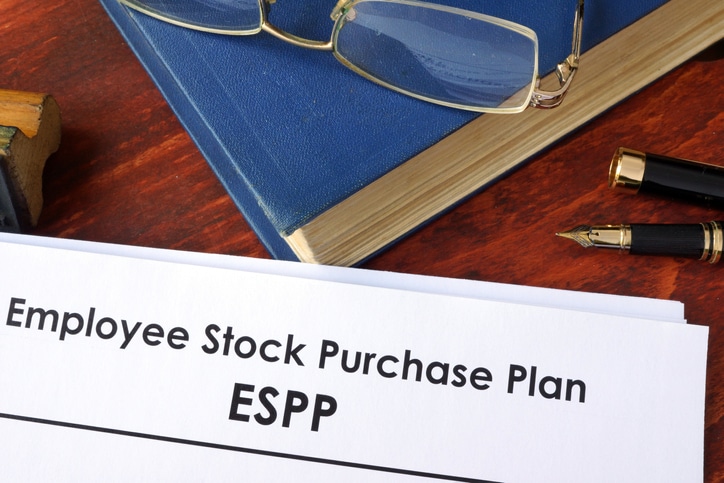There are a myriad of ways to compensate employees that supplement normal wages and salaries. Motivation of an employee base is critical to any employer. Overall, company culture and work ethic improve when employees engage in ownership. One common mode involves the utilization of an Employee Stock Purchase Plan (ESPP). An ESPP affords the worker the option, but not the obligation, to purchase its company stock at a discount, often between 5%-15% of market value. The ESPP is a simple and convenient tool allowing employers the ability to ignite inspiration and responsibility within the employee ranks. This article will focus on the more common type of ESPP that falls into the category of qualified ESPP plans.

In order for the ESPP plan to be considered “qualified,” the plan must adhere to specific IRS eligibility requirements. For example, the stock discount cannot exceed 15%, and the offering period cannot surpass 27 months. In addition, the maximum amount an employee can purchase is equal to $25K (tax year 2022) of the undiscounted value within the calendar year. Anyone owning more than 5% of the company stock is ineligible. All other plan holders must have equal rights in the plan.
The mechanics of an ESPP are often carried out via company payroll deductions. The operational flow of the ESPP can vary slightly between plans. In general, the process begins with an enrollment period followed by the offering stage and purchase dates. It is important to understand these timetables as they pertain to the taxation upon sale of ESPP shares.
- Enrollment Period – This is a window of time the employer allows the employee to elect into the ESPP, typically twice a year. Most plans also have eligibility requirements (e.g., must have been employed at least six months) before enrollment can commence.
- Offering Period – During this stage, automatic payroll deductions are initiated per the elections made during the employee’s enrollment period. These salary deferrals will accrue until the end of the offering period. Each plan can have unique offering periods, but most are 12 or 24 months.
- Purchase Period – Built into the offering period are purchase dates where the accrued payroll deductions are utilized to purchase company stock at the stated discount. It is common to have a few six-month purchase periods settled within one 12-month offering period. The purchase price equates to the fair market value of the shares less the discount stated in the ESPP.
Some plans also have a “look back” feature. A “look back” provision operates as a sweetener to some ESPPs. Essentially, it allows the employee to allocate the discount to the lower of the price at the beginning of the offering period or at the end of the purchase period. As such, if the share price appreciated from the start of the offering period to the date of purchase, the “discount” would exceed 15%. The purchase price is critical to establishing the foundation for future qualified and disqualified tax dispositions when sold.
U.S. taxation of the stock purchased in an ESPP transaction can be viewed through different lenses in the year the stock is sold. To receive favorable tax treatment, the holder must have disposed of the shares at least one year after the purchase date and two years past the offering date. In this scenario, the discount is taxed as ordinary income, and the subsequent gain is taxed at long-term capital gains rates (currently, either 15% or 20%). If the taxpayer’s adjusted gross income (AGI) exceeds $250K, then an additional 3.8% Medicare surtax is levied as well. Where one or both of these criteria are not met, the entire gain between sale and discounted purchase price is considered ordinary income. Depending on income levels, this potentially means an ordinary tax rate as high as 37% under current U.S. tax laws.
The pandemic expedited the acceptance and understanding of the benefits of remote employment. Many Canadians who had been working in the U.S. returned to Canada whilst continuing their U.S. employment on a remote basis. These Canadians remained on U.S. payrolls and remained connected to supplementary forms of compensation such as the qualified U.S. ESPP. Issues can ensue when Canadian tax residency is re-established and the subject ESPP plan holder continues participation. Other issues can also arise. Such issues demonstrate the importance of cross-border tax planning.
Unlike the U.S., Canada taxes the ESPP on the date of acquisition as opposed to the date of sale. There is potential for a foreign tax credit (FTC) mismatch if the purchase and sale are not performed within the same calendar year. One is left to wonder how to approach this FTC mismatch. The answer is to purchase and sell the ESPP shares in the same calendar year. Since the gains are recognized in the same tax window, double taxation can be avoided through the matching of FTCs on the Canadian T1 and the U.S. Form 1040, albeit at ordinary income tax rates.
An ESPP can add a layer of symbiosis between employer and employee. Each ESPP offers its own level of intricacies and needs to be examined in more depth. As each situation is unique, it’s best to speak with a cross-border tax planning and financial professional who is intimate with your specific circumstances and the ever-changing tax landscape. For a review of your specific cross-border scenario, contact Cardinal Point, your U.S./Canada financial advisor.















